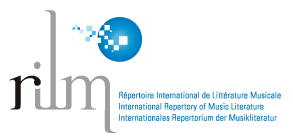Zamba y Formenlehre: un abordaje formal de la zamba en diálogo con algunas corrientes recientes de la teoría musical.
Palabras clave:
zamba, análisis musical, función formal, forma modular, William CaplinResumen
En este trabajo estudiamos la organización formal en el género zamba recurriendo a la teoría de las funciones formales, tal como es presentada por William Caplin y otros autores. Se trata de un modelo formal-funcional modular de la zamba inspirado también en la Teoría de la Sonata de James Hepokoski y Warren Darcy y se analizan diferentes ejemplos ilustrando las varias posibilidades intra-temáticas que exhiben las zambas. Finalmente se analizan en detalle las primeras estrofas de dos zambas, Debajo de la morera y Zamba del riego, incorporando los gráficos prolongacionales propuestos por Lerdahl y Jackendoff.
Publicado
Número
Sección
Licencia
Derechos de autor 2016 Alejandro Martínez

Esta obra está bajo una licencia internacional Creative Commons Atribución-NoComercial 4.0.
ATRIBUCIÓN-NOCOMERCIAL 4.0 INTERNACIONAL
https://creativecommons.org/licenses/by-nc/4.0/
Usted es libre de:
- Compartir — copiar y redistribuir el material en cualquier medio o formato
- Adaptar — remezclar, transformar y construir a partir del material
- La licenciante no puede revocar estas libertades en tanto usted siga los términos de la licencia
Bajo los siguientes términos:
- Atribución — Usted debe dar crédito de manera adecuada , brindar un enlace a la licencia, e indicar si se han realizado cambios . Puede hacerlo en cualquier forma razonable, pero no de forma tal que sugiera que usted o su uso tienen el apoyo de la licenciante.
- No Comercial — Usted no puede hacer uso del material con propósitos comerciales .
- No hay restricciones adicionales — No puede aplicar términos legales ni medidas tecnológicas que restrinjan legalmente a otras a hacer cualquier uso permitido por la licencia.
Avisos:
No tiene que cumplir con la licencia para elementos del material en el dominio público o cuando su uso esté permitido por una excepción o limitación aplicable.
No se dan garantías. La licencia podría no darle todos los permisos que necesita para el uso que tenga previsto. Por ejemplo, otros derechos como publicidad, privacidad, o derechos morales pueden limitar la forma en que utilice el material.







